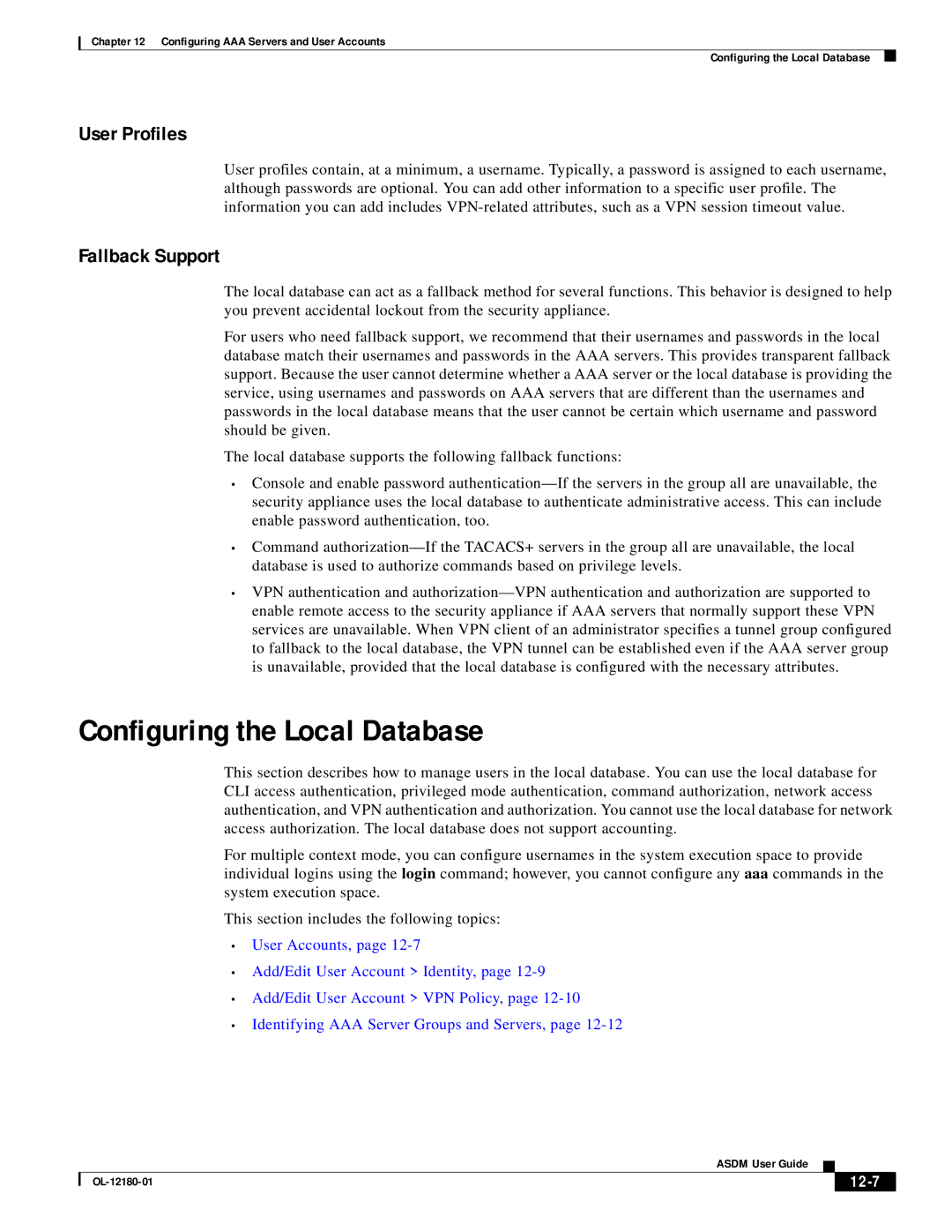Chapter 12 Configuring AAA Servers and User Accounts
Configuring the Local Database
User Profiles
User profiles contain, at a minimum, a username. Typically, a password is assigned to each username, although passwords are optional. You can add other information to a specific user profile. The information you can add includes
Fallback Support
The local database can act as a fallback method for several functions. This behavior is designed to help you prevent accidental lockout from the security appliance.
For users who need fallback support, we recommend that their usernames and passwords in the local database match their usernames and passwords in the AAA servers. This provides transparent fallback support. Because the user cannot determine whether a AAA server or the local database is providing the service, using usernames and passwords on AAA servers that are different than the usernames and passwords in the local database means that the user cannot be certain which username and password should be given.
The local database supports the following fallback functions:
•Console and enable password
•Command
•VPN authentication and
Configuring the Local Database
This section describes how to manage users in the local database. You can use the local database for CLI access authentication, privileged mode authentication, command authorization, network access authentication, and VPN authentication and authorization. You cannot use the local database for network access authorization. The local database does not support accounting.
For multiple context mode, you can configure usernames in the system execution space to provide individual logins using the login command; however, you cannot configure any aaa commands in the system execution space.
This section includes the following topics:
•User Accounts, page
•Add/Edit User Account > Identity, page
•Add/Edit User Account > VPN Policy, page
•Identifying AAA Server Groups and Servers, page
|
| ASDM User Guide |
|
| ||
|
|
| ||||
|
|
|
|
| ||
|
|
|
| |||
